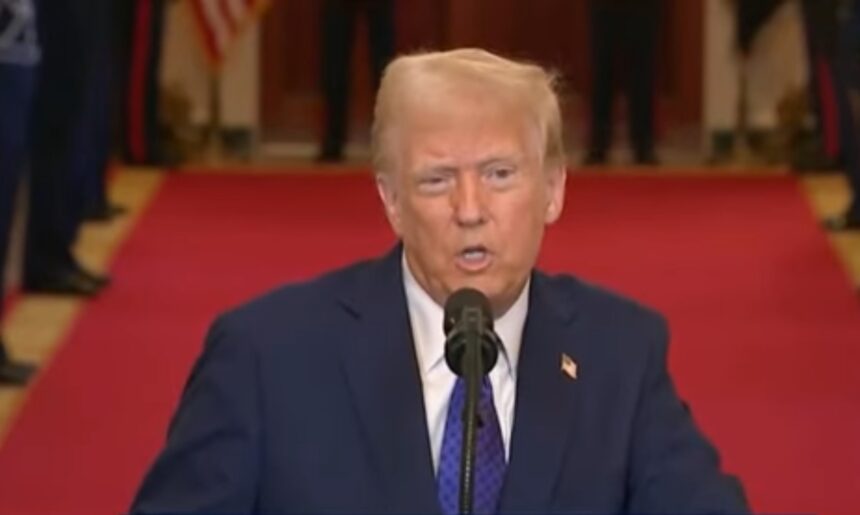Guantanamo Bay, long a symbol of U.S. counterterrorism policies, has once again found itself at the center of a major political and human rights debate. President Donald Trump recently announced plans to repurpose the detention facility to house up to 30,000 undocumented immigrants accused of serious crimes. This decision has sparked international outcry, with critics raising legal, ethical, and humanitarian concerns over the use of a facility known for its controversial history in detaining terrorism suspects.
Guantanamo Bay, or Gitmo, was established in 2002 during the George W. Bush administration as a high-security detention center for individuals suspected of involvement in terrorist activities. Over the years, the facility has housed detainees accused of links to Al-Qaeda, the Taliban, and other extremist organizations. However, the detention center quickly became infamous for allegations of human rights abuses, indefinite detentions without trial, and enhanced interrogation techniques, which many critics labeled as torture.
Despite multiple efforts by past administrations to close or reduce the number of detainees, Guantanamo Bay has remained operational. As of January 2025, there are still 15 detainees in the facility, with ongoing debates over their fate. Now, Trump’s latest order seeks to expand Guantanamo’s role, transitioning it from a counterterrorism facility to an immigration detention center, raising serious concerns among civil rights groups, international organizations, and political leaders.
On January 29, 2025, President Donald Trump signed an executive order directing the Department of Homeland Security (DHS) and the Pentagon to begin preparations for housing undocumented immigrants at Guantanamo Bay Naval Base. According to administration officials, the plan involves constructing new detention facilities within the naval base to accommodate up to 30,000 migrants, primarily those who have been accused of crimes and are awaiting deportation.
The Trump administration has justified the move as part of a broader crackdown on illegal immigration, arguing that existing detention facilities in the U.S. are overwhelmed and that Guantanamo Bay provides a secure and isolated location to hold migrants. Administration officials have highlighted the following reasons for the move: National Security Concerns – The administration claims that many of the migrants being detained have been accused of serious crimes, including drug trafficking, human smuggling, and violent offenses. Overcrowded Detention Centers – Immigration authorities argue that existing ICE detention centers are already at capacity, and an alternative site is needed to prevent mass releases of detainees into the U.S. A Secure and Controlled Environment – Guantanamo Bay is a heavily guarded military installation with an isolated location, which officials claim reduces the risk of mass escapes or security breaches.
The decision to use Guantanamo Bay for migrant detention has been met with intense criticism from civil rights organizations, politicians, and international bodies. Many human rights groups, including Amnesty International and Human Rights Watch, have strongly condemned the decision, arguing that it violates international human rights standards. They point out that Guantanamo Bay has been associated with torture, indefinite detention, and the denial of legal rights, and repurposing it for migrants would create a humanitarian crisis. “Detaining migrants at a site known for human rights abuses will only further damage the U.S.’s reputation on the global stage,” said a spokesperson from Amnesty International.
Several civil liberties organizations have vowed to challenge the executive order in court, arguing that detaining migrants at a military facility outside U.S. borders raises serious constitutional and legal issues. Critics argue that: Migrants detained at Guantanamo might be denied due process, as the facility operates under different legal jurisdictions than U.S. mainland detention centers. Many of the migrants are asylum seekers, and sending them to Guantanamo Bay could violate international refugee protections. The use of military detention for civilians raises serious legal concerns, as Guantanamo was originally designed for enemy combatants, not asylum seekers or undocumented immigrants.
The Cuban government has strongly condemned the move, calling it an act of brutality and demanding the closure of the Guantanamo Bay detention facility. Guantanamo Bay is located on Cuban territory, though it has been under U.S. control since 1903. Cuban officials argue that using it for mass immigration detention violates Cuban sovereignty and further exacerbates tensions between Washington and Havana.
Trump’s Guantanamo Bay migrant detention policy has divided U.S. politics, with Republicans supporting the move and Democrats strongly opposing it. Many Republican lawmakers have praised the decision, arguing that it demonstrates Trump’s tough stance on immigration. Conservative politicians have echoed Trump’s claims that the U.S. is overwhelmed by undocumented migrants and needs alternative detention options.
Democrats and immigration advocates have denounced the move as inhumane and unconstitutional. Some Democratic senators have called for emergency legislation to block funding for the expansion of Guantanamo’s migrant detention facilities. House Minority Leader Hakeem Jeffries described the decision as “a blatant abuse of executive power that will only worsen America’s humanitarian crisis.”
With Guantanamo Bay now at the center of a new political battle, several key developments are expected in the coming weeks: Legal Challenges – Immigration and human rights groups are preparing to file lawsuits to block the use of Guantanamo Bay as an immigration detention center. Congressional Debate – Lawmakers in Congress are likely to debate funding for the new facilities, with Democrats seeking to defund the project. International Pressure – Global organizations, including the United Nations, are expected to weigh in on the situation, urging the U.S. to abandon the plan.
Guantanamo Bay has long been a symbol of U.S. counterterrorism efforts, but its new role as a migrant detention center has reignited debates over human rights, immigration policy, and executive power. President Donald Trump’s decision to detain migrants at Gitmo represents one of the most controversial immigration policies in modern history, raising legal, ethical, and political questions that could shape the future of U.S. immigration enforcement.
With strong domestic and international opposition, lawsuits on the horizon, and a divided Congress, the fate of Trump’s Guantanamo Bay immigration policy remains uncertain. The coming weeks will likely determine whether this drastic shift in immigration enforcement becomes a lasting reality or faces legal and political defeat






